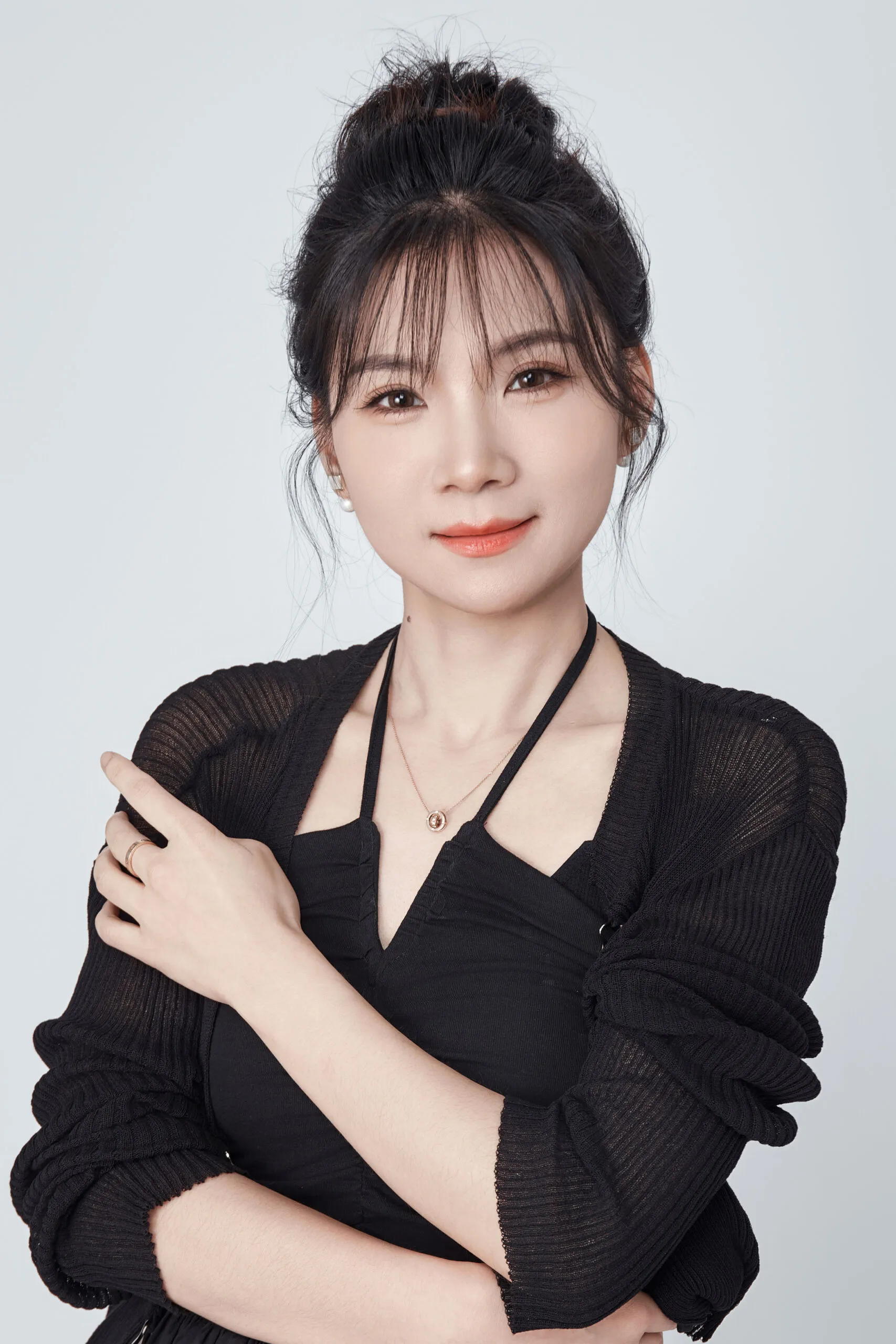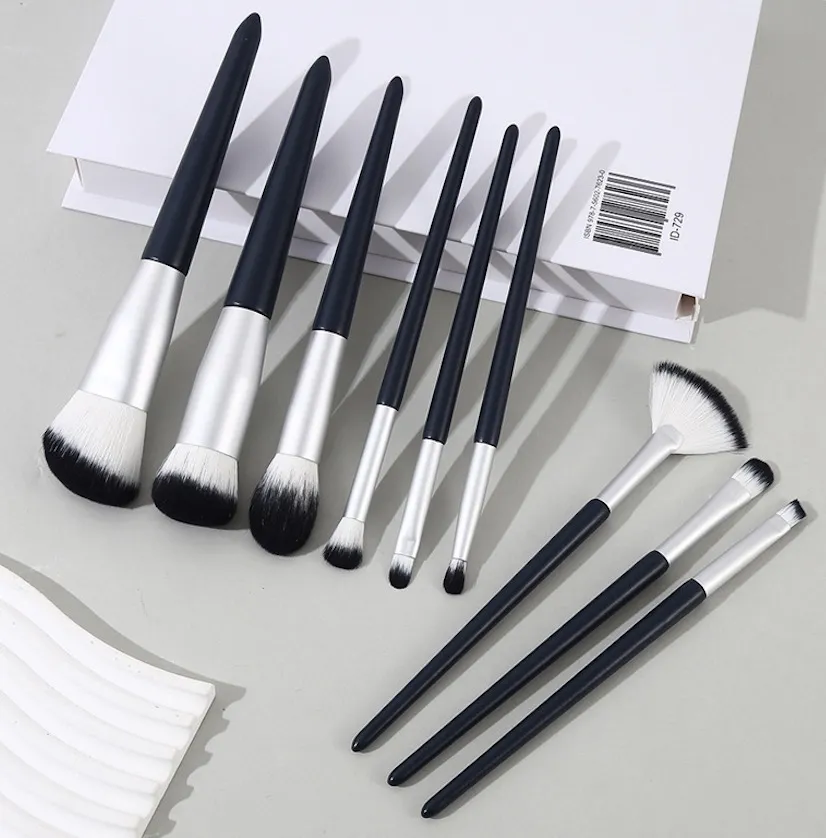Choosing the right materials for your brush set feels overwhelming. A wrong choice can hurt your brand’s quality perception and budget. This guide makes it simple to decide.
A 16-piece groove makeup brush set typically uses synthetic PBT/Taklon bristles1 for creams, and natural goat/squirrel hair for powders. Ferrules are aluminum for cost-effectiveness or copper for durability. Handles are usually wood or acrylic. The best combination depends on your brand’s quality, cost, and performance goals.
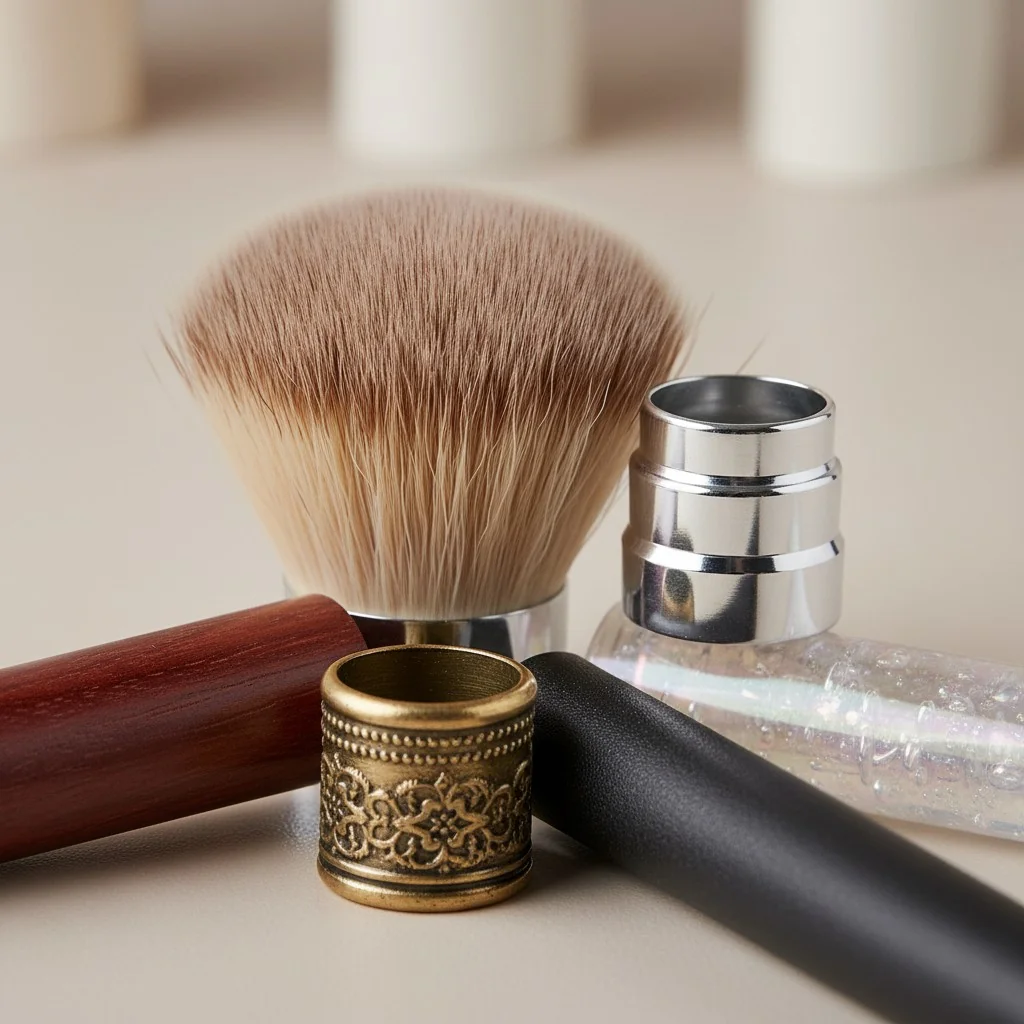
Sourcing a makeup brush set is about more than just finding a supplier. It’s about making dozens of small decisions that add up to a product your customers will love. Every material choice, from the bristle fiber to the ferrule metal, impacts how the brush performs, how long it lasts, and how it represents your brand. I’ve spent years on the factory floor and helped hundreds of brand founders navigate these choices. It’s a critical step, and getting it right sets you up for success.
Let’s walk through the key components together. I’ll share the data and insights I’ve gathered to help you build a brush set that perfectly balances performance, cost, and your unique brand story.
Copper ferrules are about 10 times harder than aluminum ferrules.True
Industry reports and material science data confirm that copper alloys used in ferrules have significantly higher hardness and density compared to standard aluminum, making them more resistant to dents and damage.
All synthetic brush fibers are the same.False
Synthetic fibers like PBT, PTT, and BASF-grade PBT have different properties. They vary in softness, pickup ability, drying time, and can even be bio-based or have antibacterial features.
Materials map: The optimal bristle–ferrule–handle combo for a 16‑piece set by formula?
Building a versatile 16-piece set is a balancing act. You need brushes for every formula, but using one material for all is inefficient. Here’s how to map it out.
For a balanced set, use synthetic PBT for liquids and creams (foundation, concealer) and natural goat/squirrel hair2 for powders (blush, bronzer). Pair these with aluminum ferrules for cost-sensitive brushes and copper for hero brushes. Wood handles add a premium feel, while acrylic offers durability.
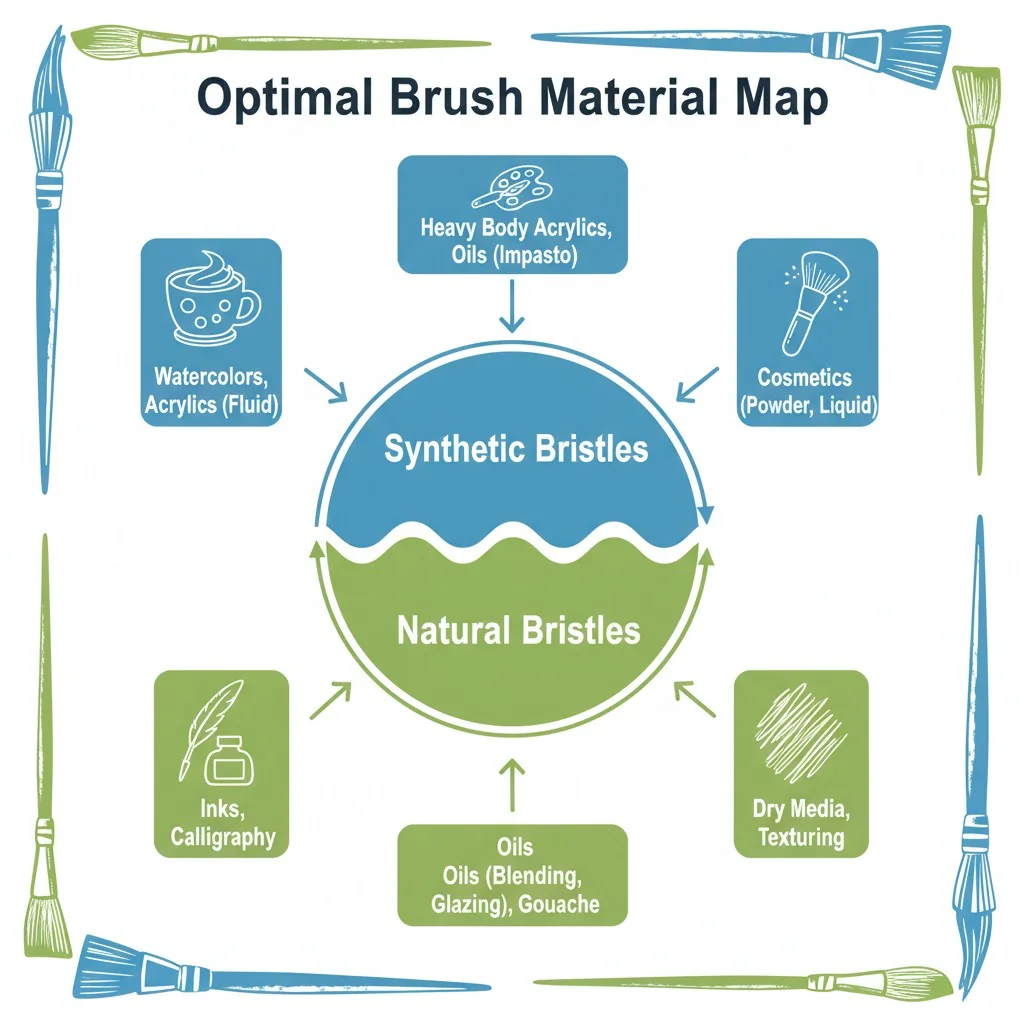
When I work with brand founders, I tell them to think of their brush set as a team of specialists, not generalists. Each brush has a specific job, and you need to give it the right tools for that job. This strategic approach ensures every brush performs flawlessly, which is what customers notice.
The Bristle Strategy: Formula First
Your first decision should be based on the makeup formula.
- For Liquids & Creams (Foundation, Concealer, Gel Liner): You need synthetic bristles like PBT/Taklon. These fibers are non-porous, so they don’t soak up the product. This means less waste, more even application, and they are much easier to clean.
- For Powders (Setting Powder, Blush, Eyeshadow): Natural hairs like goat or squirrel are often the best choice. The microscopic cuticles on natural hair are excellent at picking up and diffusing powder products for a soft, blended finish.
The Ferrule & Handle Strategy: Balancing Cost and Luxury
Not every brush needs the most expensive components.
- Ferrules: I recommend using premium copper ferrules3 on your "hero" brushes—the ones used most often, like foundation or large powder brushes. For smaller, less-used brushes like an eyeshadow smudger, cost-effective aluminum is perfectly fine.
- Handles: wood handles4 offer a classic, weighted feel that signals luxury. Acrylic handles are great for moisture resistance and offer a wider range of stable, vibrant colors.
Here is a simple way to think about it:
| Component | Best for Liquids/Creams | Best for Powders |
|---|---|---|
| Bristle | Synthetic PBT/Taklon | Natural Goat/Squirrel |
| Ferrule | Copper (for heavy use) | Aluminum (for light use) |
| Handle | Acrylic (durable, colorful) | Wood (premium feel) |
Natural hair brushes are always better than synthetic brushes.False
It depends on the formula. Synthetics are superior for applying liquids and creams because they don't absorb product, while natural hairs excel at picking up and diffusing powders.
You can mix and match materials within a single brush set.True
Strategically using different bristles, ferrules, and handles for different brushes in a set is a common practice to optimize both performance and production cost.
Cost vs. performance: When to spec copper ferrules, and when aluminum is enough?
Your ferrule choice directly impacts your brush’s durability and cost. Many founders struggle with this: is expensive copper worth it? The answer is yes, but only for certain brushes.
Specify copper for high-use brushes like foundation and kabukis. Its hardness (~10× aluminum) and corrosion resistance justify the cost. Use aluminum for lighter eye brushes and travel sets to manage your budget and add color variety. This keeps key brushes feeling luxurious without overspending.
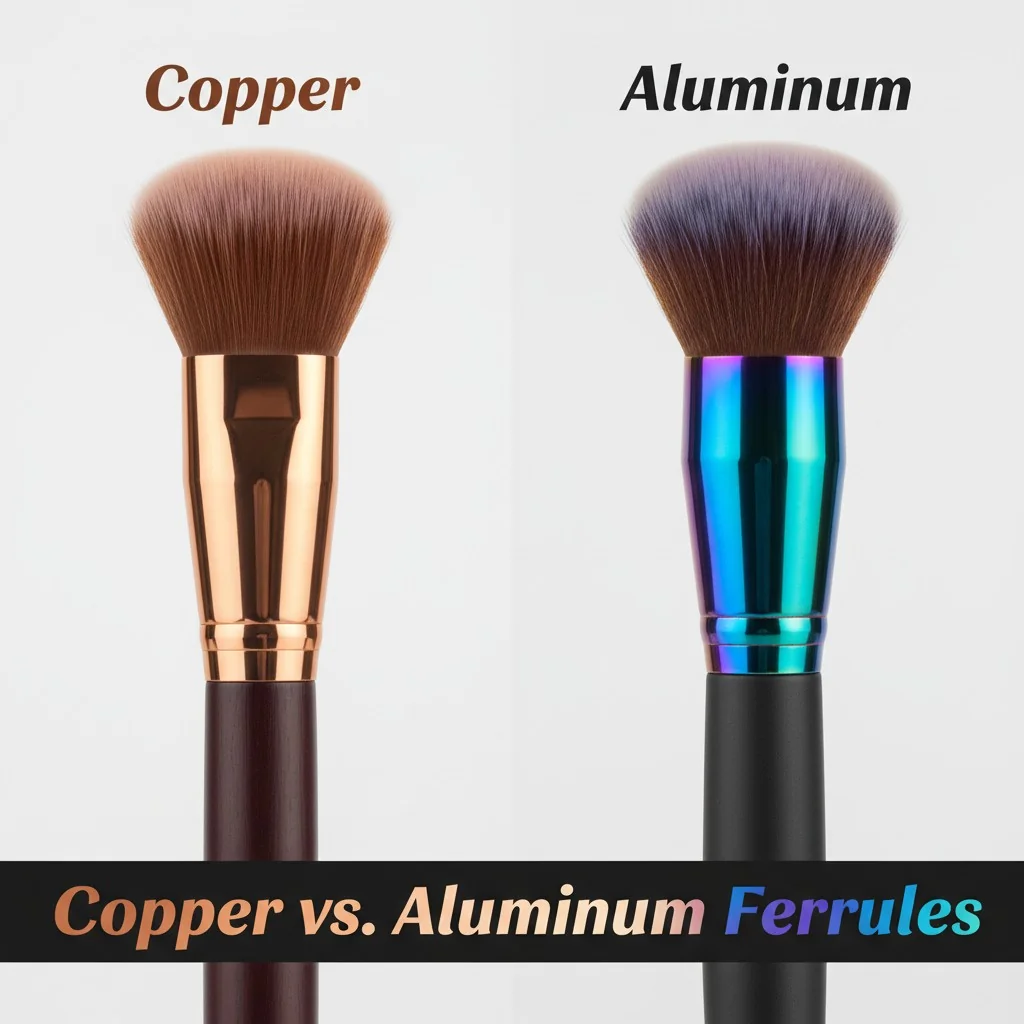
I’ve seen thousands of brushes come off the production line, and the difference in ferrule material is clear over time. A ferrule isn’t just a decorative metal band; it’s the structural core of the brush head. It holds the bristles securely and withstands the pressure of application and cleaning.
When to Invest in Copper
Copper is a premium material. It costs about 4 to 6 times more than aluminum, but it’s also roughly 10 times harder. This matters most for brushes that undergo high stress.
- High-Torque Brushes: Think of dense kabuki brushes used for buffing foundation or large powder brushes. These brushes are pushed and swirled against the skin, putting a lot of force on the ferrule. A copper ferrule resists bending and keeps the bristles from becoming loose.
- Frequently Washed Brushes: Foundation and concealer brushes need deep cleaning often. Copper has superior corrosion resistance, so it holds its shape and finish better against repeated exposure to water and brush cleansers.
When Aluminum is the Smart Choice
Aluminum is a fantastic, cost-effective material. It’s lightweight and can be easily anodized into any color you can imagine, which is great for branding.
- Lighter-Use Brushes: For eyeshadow blending brushes, liner brushes, or fan brushes, the force applied is minimal. Aluminum is more than strong enough for these applications.
- Cost-Sensitive Lines: If you’re creating a travel set or an entry-level line, using aluminum across the board helps you manage your bill of materials (BOM) and offer a more competitive price point.
This hybrid approach is what I recommend to most of my clients. It allows you to deliver that premium, durable feel on the brushes that matter most to your customers, while saving costs where it won’t impact performance.
Copper ferrules cost 4–6 times more than aluminum ferrules.True
Based on raw material costs and manufacturing complexity, copper is a significantly more expensive metal to source and form into ferrules compared to the more abundant and malleable aluminum.
Aluminum ferrules will always corrode and fall apart quickly.False
While less corrosion-resistant than copper, modern anodized aluminum ferrules are durable enough for most consumer uses, especially on brushes that are not subjected to constant, harsh cleaning cycles.
Fiber engineering that matters: PBT/Taklon, BASF‑grade, PTT, and antibacterial options?
The world of synthetic fibers is full of technical terms. It can be confusing, but understanding these options allows you to create a brush that truly performs and stands out.
Go beyond standard PBT by tuning fiber diameter for softness. For premium powder brushes, consider BASF-grade PBT5 for better pickup. For an eco-friendly angle, use PTT (TAfrE). If you need antibacterial claims, spec AG-TAfrE but always demand third-party lab test reports.
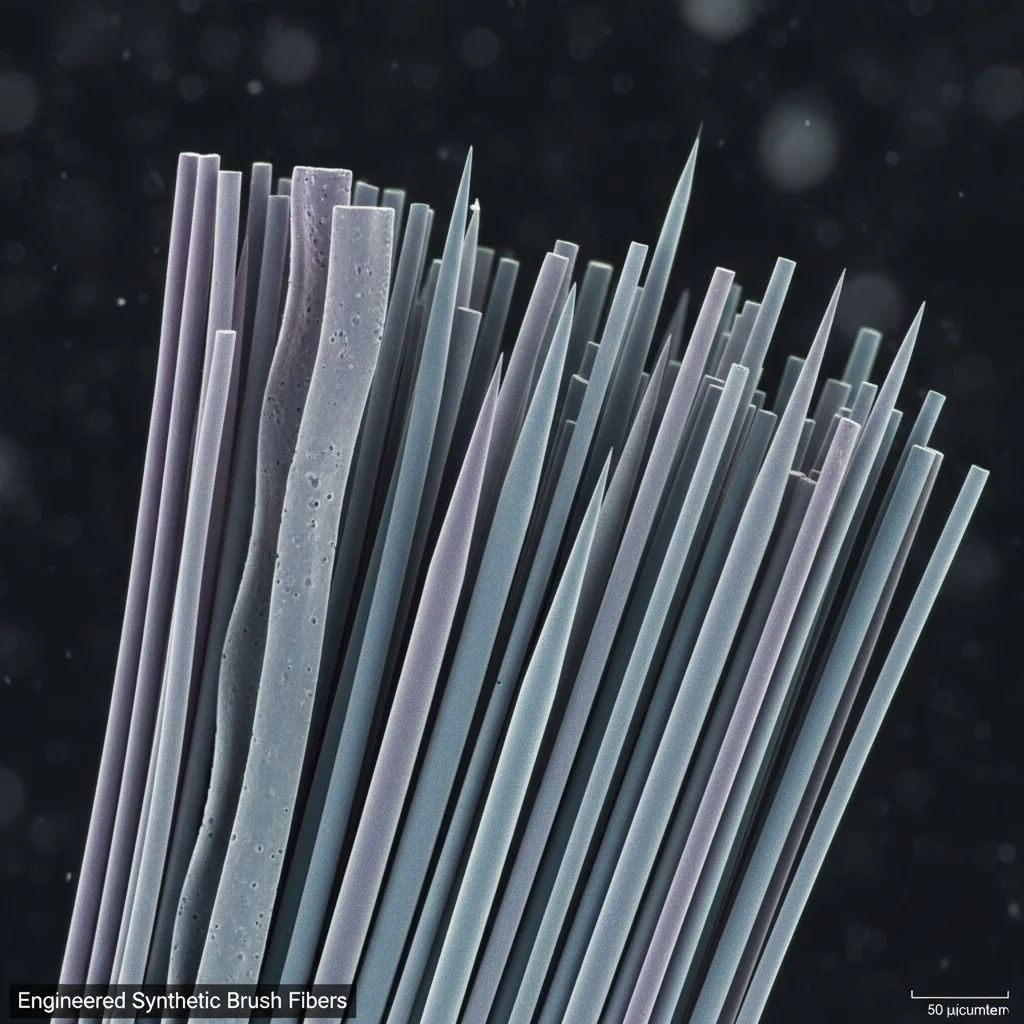
When I first started in the factory, I was amazed at how a tiny change in a fiber could completely change how a brush felt and worked. This is where true customization happens. It’s not just about choosing "synthetic"; it’s about choosing the right synthetic.
The Synthetic Fiber Hierarchy
Think of synthetic fibers as having different tiers of performance and marketing appeal.
- PBT/Taklon: This is the industry standard. It’s a versatile and reliable polyester fiber that’s perfect for general-use sets. You can customize its performance by adjusting the fiber’s diameter (finer equals softer) and by mixing in "waved" strands, which help powder brushes pick up and release product more effectively.
- BASF-grade PBT: This is a branded, higher-grade PBT fiber. It’s known for having a softer feel, superior product pickup, and, importantly, it dries faster than standard PBT. This is a great selling point for customers who wash their brushes frequently.
- PTT (TAfrE): This fiber is a game-changer for sustainability-focused brands. It’s made with approximately 30% renewable, corn-based oils. It also has a uniquely soft, resilient feel that many users prefer over standard PBT.
- AG-TAfrE: This is PTT fiber infused with silver, which gives it antibacterial properties. This is a powerful marketing claim, but it comes with a big responsibility.
One of the biggest pain points for brand founders is suppliers who make claims they can’t prove. If you want to market your brushes as "antibacterial," you must verify it. I always tell my clients: ask the factory for the lab reports. They should be from a recognized third-party lab and name the specific bacteria tested against (like S. aureus and E. coli). Without that proof, it’s just an empty promise.
PTT (TAfrE) fiber is partially made from corn.True
PTT, or polytrimethylene terephthalate, is a polyester synthesized using a monomer (PDO) that can be derived from corn glucose, making the final fiber approximately 30-37% bio-based.
Any brush labeled 'antibacterial' is proven to kill germs.False
The term 'antibacterial' is a marketing claim that requires substantiation. Without standardized lab tests (e.g., ISO 22196) against specific organisms, the claim is unverified and may not meet regulatory standards in markets like the EU or US.
Compliance and claims: Vegan, cruelty‑free, REACH/CPSR, and antimicrobial test standards?
Making claims about your product is powerful, but you must have the documentation to back them up. This protects your brand, builds trust with customers, and is a legal requirement in many markets.
Mark synthetic sets as vegan/cruelty-free. Ensure REACH/CPSR compliance for EU market access. For antimicrobial claims, cite specific lab protocols like ISO 22196. Vague claims without data are a risk to your brand’s credibility and can cause legal issues.
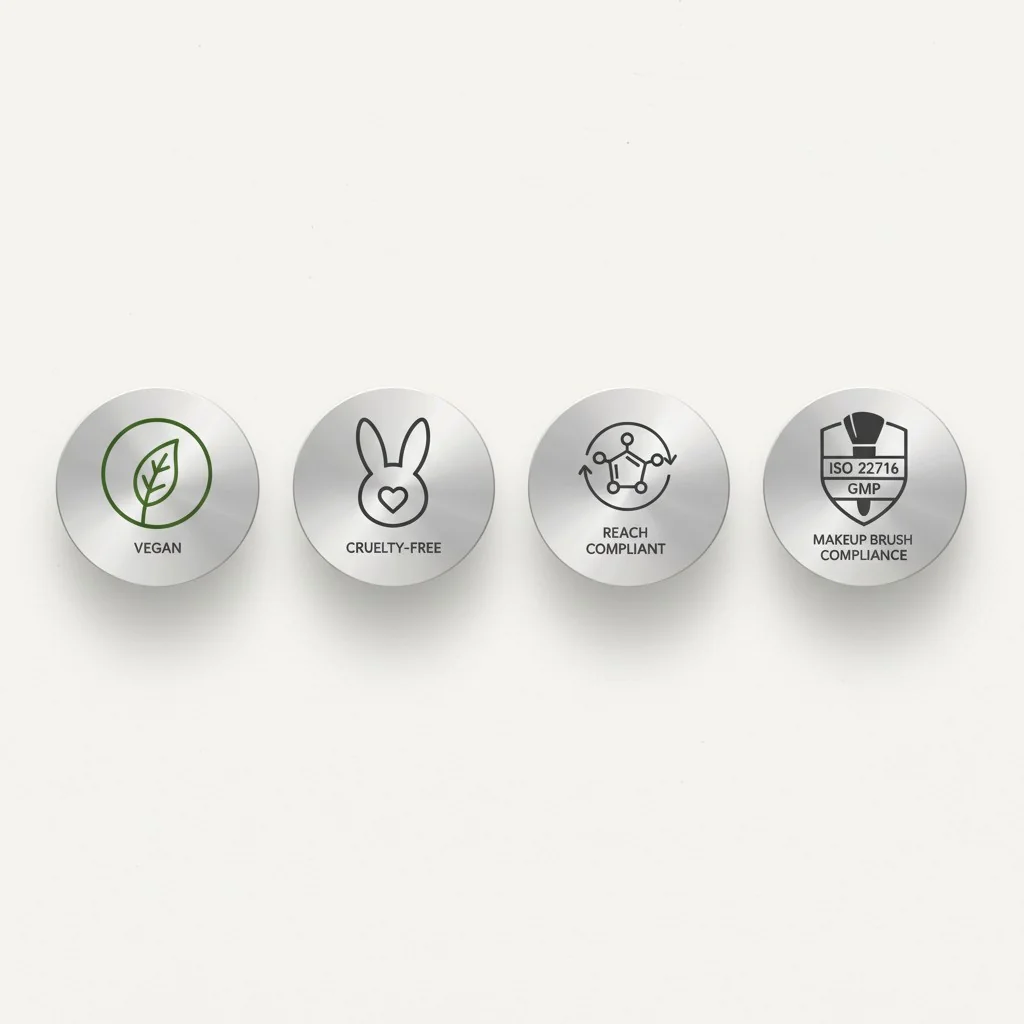
One of the most common frustrations I hear from brand founders is the difficulty in getting clear, reliable documentation from factories. It’s a major pain point. That’s why at Brushino, we make transparency a priority. Understanding these standards is the first step to protecting your business.
Key Claims and Compliance Standards
Let’s break down what these terms mean for your brush set.
- Vegan & Cruelty-Free: These are the most common claims. If your set uses only synthetic bristles and you confirm the glue is not animal-derived, you can confidently label it vegan and cruelty-free. This is a huge selling point for modern consumers.
- REACH & CPSR: If you plan to sell in the European Union, these are non-negotiable. REACH is a regulation that restricts harmful chemicals in products. A Cosmetic Product Safety Report (CPSR) is required for any product that touches the skin. A reliable factory should be able to provide documentation showing their materials meet these standards.
- Antimicrobial Test Standards: As I mentioned before, this claim needs solid proof. Don’t accept vague assurances. Ask for a test report that cites a recognized standard, like JIS Z 2801 or its international equivalent, ISO 22196. The report should clearly state which microorganisms (e.g., E. coli) were tested and show a significant reduction in their growth on the fiber’s surface.
Navigating compliance can feel like a full-time job, but it’s essential for building a reputable global brand. Working with a manufacturing partner who understands these requirements and provides the paperwork without a fight is one of the most valuable assets you can have. It saves you time, reduces your risk, and lets you focus on building your brand.
REACH is a safety regulation for products sold in the United States.False
REACH (Registration, Evaluation, Authorisation and Restriction of Chemicals) is a European Union regulation, not a U.S. one. The U.S. has its own set of regulations managed by agencies like the CPSC and FDA.
A 'cruelty-free' claim for a brush set means no animal testing was involved.True
The 'cruelty-free' designation certifies that the product and its ingredients were not tested on animals at any stage of development or production.
Conclusion
Choosing the right materials balances performance, cost, and your brand’s story. Use this guide to confidently build a brush set that your customers will love and trust.
References
-
Explore the advantages of synthetic PBT/Taklon bristles for makeup application and their impact on performance. ↩
-
Discover why natural goat and squirrel hair are favored for powder application in makeup brushes. ↩
-
Learn about the durability and performance benefits of copper ferrules in high-use makeup brushes. ↩
-
Understand why wood handles are associated with luxury and premium feel in makeup brushes. ↩
-
Learn about the superior properties of BASF-grade PBT for enhanced brush performance. ↩

